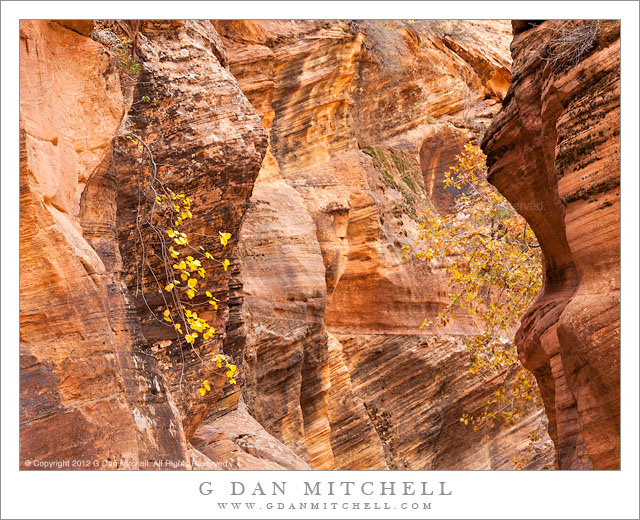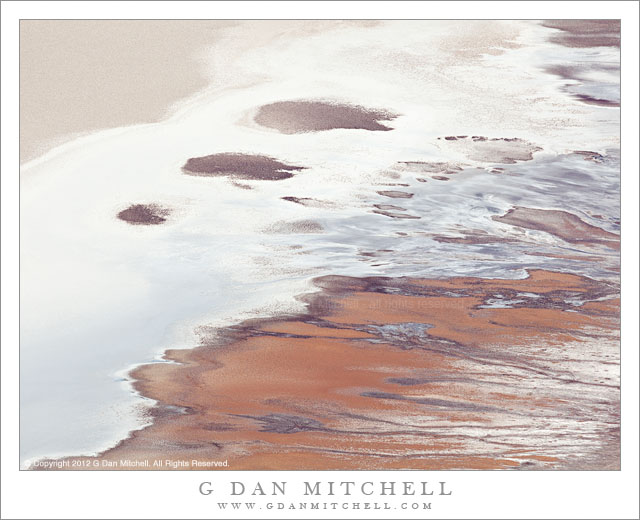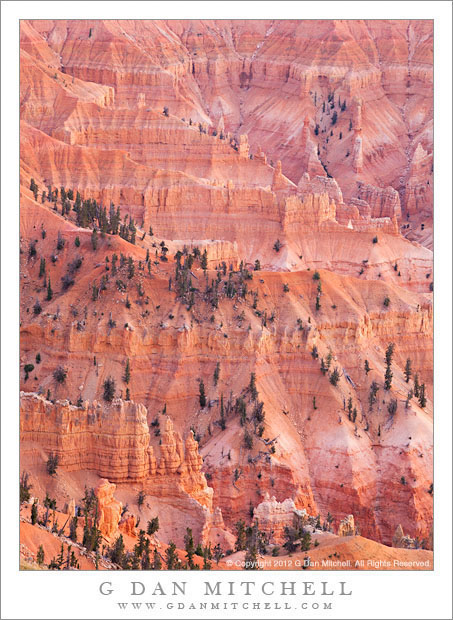Slot Canyon Walls. Zion National Park, Utah. October 22, 2012. © Copyright 2012 G Dan Mitchell – all rights reserved.
The sculpted walls of a narrow and curving slot canyon, Zion National Park
On the first non-travel day of my most recent Utah visit, since we were passing through Zion National Park on our way to points beyond, we decided to spend the better part of the day shooting there. For a few reasons, including that it was a bit early for fall color there, we chose to not go to Zion Canyon, but to instead spend the time along the Mount Carmel Highway that cuts through the park from west to east. Our object was to photograph the wide range of interesting subjects found there: sandstone of all shapes, textures, and colors; trees, both evergreen and those with fall foliage, and more.
We ended up spending most of the day along this route. An observer might have wondered a bit about us. We would drive slowly along the road in one direction, frequently slowing down and pulling over, looking around a bit, then either getting back on the road or piling out and heading off in various directions – either up into rocks or down into a wash or canyon. Eventually we worked our way to one end of the road’s passage through the park… and we turned around and headed back. We did this loop several times. Why? First, things that you might miss while driving one direction become easier to see when you head the other way. Second, and perhaps most important, light is not a static thing. It changes in may ways – intensity, color, angle, direction, what it strikes and what it misses – as the day goes on, so while the <i>landscape</i> might have been, arguably, “the same,” the <i>lightscape</i> was in constant flux. I made this photograph in a short section of slot canyon, contriving to find a point of view from which almost nothing but the twisting and overlapping forms of the rocks would be visible, along with just a bit of foliage.
 G Dan Mitchell is a California photographer whose subjects include the Pacific coast, redwood forests, central California oak/grasslands, the Sierra Nevada, California deserts, urban landscapes, night photography, and more.
G Dan Mitchell is a California photographer whose subjects include the Pacific coast, redwood forests, central California oak/grasslands, the Sierra Nevada, California deserts, urban landscapes, night photography, and more.
Blog | About | Flickr | Twitter | Facebook | Google+ | 500px.com | LinkedIn | Email
Text, photographs, and other media are © Copyright G Dan Mitchell (or others when indicated) and are not in the public domain and may not be used on websites, blogs, or in other media without advance permission from G Dan Mitchell.




